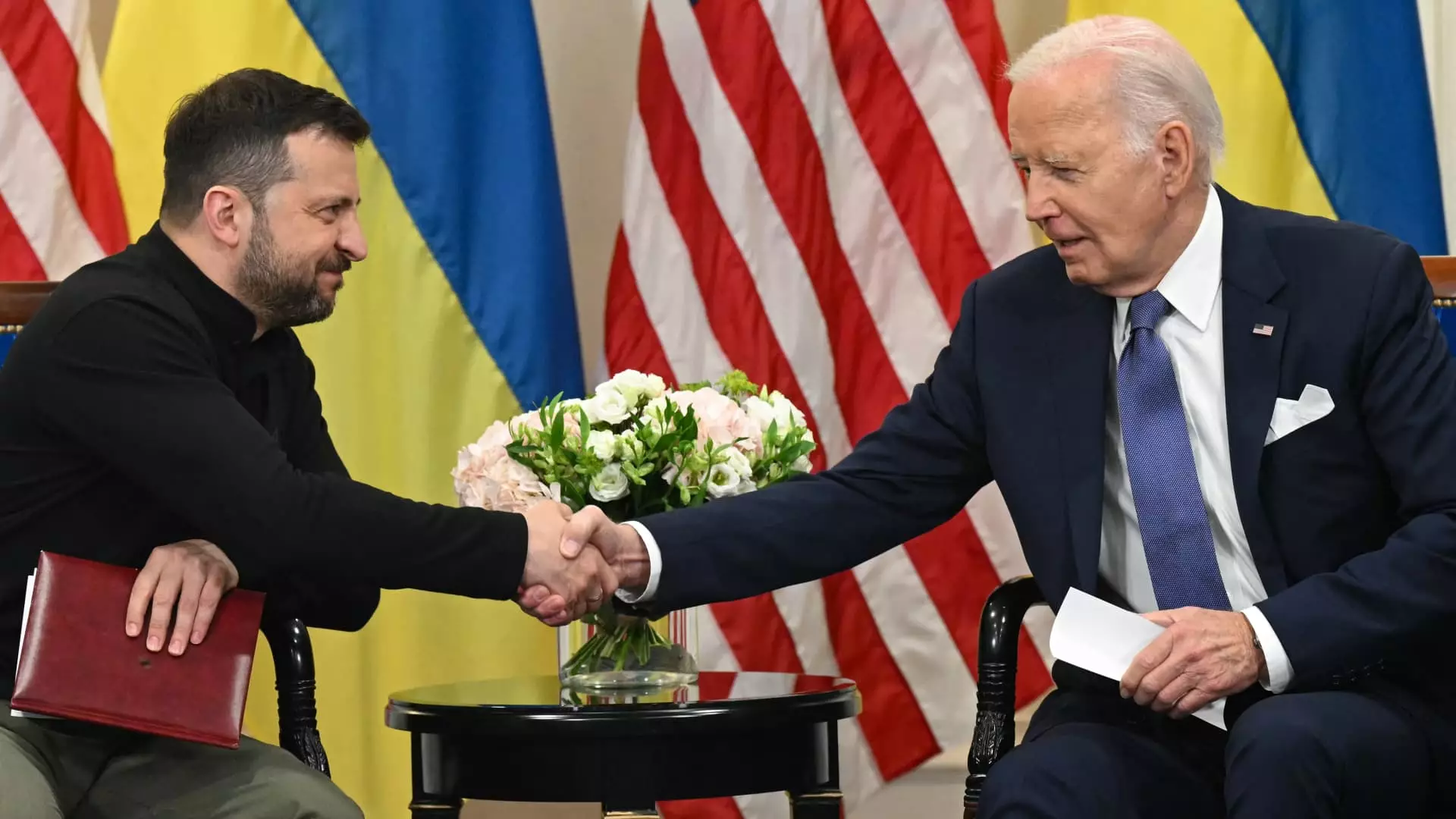In an era overshadowed by conflict and geopolitical shifts, the United States has pledged an additional $6 billion in military and budget assistance to Ukraine. This announcement comes in the closing weeks of President Joe Biden’s administration, as he seeks to fortify Ukraine’s defenses before the anticipated transition to President-elect Donald Trump. The urgency of this funding reflects the deteriorating situation on the ground, where Russian aggression intensifies with dire impacts on Ukrainian civilians and infrastructure.
Biden’s announcement features $2.5 billion earmarked for security assistance, underscoring the U.S. commitment to empowering Ukraine militarily. This commitment is complemented by $3.4 billion in budget aid, a crucial sum that provides essential resources for the Ukrainian government amid ongoing hostilities. The security assistance includes significant allocations—$1.25 billion is sourced from American military stockpiles, while an additional $1.22 billion comes from the Ukraine Security Assistance Initiative (USAI). The latter denotes a shift in procurement strategy, indicating a reliance on defense contractors rather than immediate supplies from U.S. reserves, which can artificially limit the speed of aid deployment to the front lines.
With nearly three years into the conflict stemming from Russia’s invasion in February 2022, the scale of U.S. assistance—totaling approximately $175 billion—paints an alarming picture of the war’s enduring nature. Nevertheless, the commitment to prolong this aid remains in question as the political landscape shifts with Trump’s impending presidency. Trump’s more isolationist views have raised eyebrows regarding U.S. involvement, indicating potential changes in the flow of aid and responsibilities shared with European allies.
Moreover, discussions surrounding the quality of this aid have intensified amid reports of Russia employing North Korean troops, who are reportedly suffering high casualty rates. This development evokes concerns not just for military personnel but also for the broader implications on international alliances and responses to the conflict.
The Role of Budget Aid
Treasury Secretary Janet Yellen emphasized the importance of economic stability in Ukraine by stating that the budget aid would enable the government to continue functioning amid wartime conditions. The funding is crucial for ensuring that essential services, such as salaries for teachers and municipal employees, remain intact, which is vital for maintaining public morale and societal structure during a prolonged conflict. Under these circumstances, the survival of the Ukrainian state is inextricably linked to concerted international support.
Yellen’s articulation of Ukraine’s needs points out that the war is not merely a military challenge but also an economic battle. There’s an evident duality in the outlined aid package: immediate military supplies must coexist with long-term economic reinforcement to secure Ukraine’s sovereignty and independence from Russian aggression.
Despite the current administration’s resolve, the prospect of continued robust support under a Trump presidency remains uncertain. Trump’s historical skepticism towards U.S. military involvement abroad could lead to a potential recalibration of aid, potentially shifting financial burdens onto European partners. As Congressional control shifts, there seems to be a divergence among Republicans regarding the continuation of sizable aid packages. This intra-party debate signifies a pivotal moment in U.S. foreign policy direction.
Yet, Biden’s administration continues to underscore that Ukraine’s success relates directly to America’s core national interests. This line of thinking perceives constraining Russia and maintaining a democratic ally in Eastern Europe as pivotal. The rhetoric surrounding these measures indicates a willingness to adapt to political realities while striving to ensure that the necessary resources are allocated to support Ukraine against an aggressive adversary.
As the transition of power approaches in Washington, the landscape of U.S. assistance to Ukraine stands at a crossroads. The substantial aid disbursement announced by Biden marks both an effort to bolster Ukraine in its fight against Russia and a reflection of the acute challenges lying ahead. With military and economic aid intricately tied to the broader geopolitical context, the coming weeks will be crucial for both Ukraine and the international community’s response to a war that shows little sign of abating. The responsibility to adapt strategies and ensure ongoing support amid a rapidly evolving political environment may define the future of U.S. foreign policy in relation to one of the most pressing conflicts of our time.

